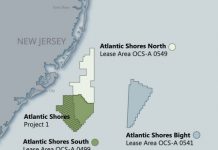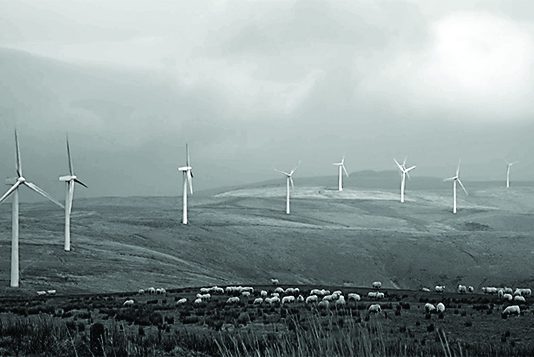The scale of the shift from original equipment manufacturer (OEM) agreements to independent maintenance contracts and its impact on the market is not to be underestimated. According to IHS Energy research, U.S. operations and maintenance (O&M) spending is forecasted to double to close to $6 billion by 2025 as a result of the number of turbines coming out of warranty. Worldwide, we estimate that around 30 to 35 percent of the market has made the shift, or is considering shifting to independent maintenance contracts.
The fate of the Production Tax Credit has driven owner/operators to search for alternative ways to reduce costs wherever possible—and there’s no pretending that cost isn’t the major factor driving this industry development.
With average yearly maintenance costs of over $50,000 per turbine, operators will naturally look for ways to bring this figure down; however, once warranties expire, this exercise becomes increasingly complex.
During the OEM’s standard warranty period, which is often non-negotiable, an operator will have a limited idea of the true operational experience of a wind farm, since not all day-to-day issues are shared by the OEM and the data history accumulated by the operator is not all encompassing.
When it comes to negotiating a follow-on O&M contract with the OEM, the operator is presented with a ‘menu’ of options ranging from basic programs to comprehensive offerings. These packages come at a significant price; hence an inevitable shift towards independent contracts.
Some OEMs have differentiated their offering by providing Energy Yield Guarantees (EYG) or Annual Energy Production Guarantees (AEP), which cover the production of a wind farm, rather than its availability. These offer owner/operators the opportunity to make savings on personnel costs, since the bulk of maintenance work will be performed by the OEM for a price that guarantees a specified production output no matter what.
By comparison, independent O&M providers will offer a similar menu of incrementally priced offerings to the OEM, in conjunction with an availability guarantee, for a lower cost than the OEM can offer. Since the independent contractor is bound to this availability guarantee, it must continue to provide a robust and efficient program in order to meet targets. Owner/operators opting for independent contracts will thereby benefit from upfront cost savings while maintaining availability objectives.
Both of these routes have their benefits for an owner/operator, however, in our view, the biggest difference and greatest advantage is the EYG offered by some OEMs. While independent contractors can guarantee a particular percentage of availability, an EYG takes this one step further with a commitment to deliver a specific energy yield.
Relative experience is another area where the maintenance offerings of OEMs and independents can be differentiated. Manufacturers will naturally claim to know everything there is to know about their machines and will assert that they are in the ideal position to service these. This is a valid point—the OEM will possess the most comprehensive database available and will be up-to-date with a number of trends and issues that might not make it into the public domain.
Independent contractors, by contrast, will stress the value of lessons learned across the sector, having worked with a variety of manufacturers and equipment. They will be able to share these lessons openly with the client to ensure that projects continue to be managed effectively going forward.
Crucially, from an insurance perspective, both OEMs and independent contractors have a vested interest in keeping turbines working properly and minimizing down time. The best way to ensure this will always be to have a proactive maintenance program in place, ideally making effective use of condition based monitoring.
Naturally, however, any switch in maintenance practices is a source of potential concern for insurers and underwriters. An insurer will always feel most comfortable while the original manufacturer warranty is still in effect, and, once this has expired, will be in need of a certain level of reassurance in order to resolve uncertainty and maintain that level of comfort.
As such, when negotiating follow-on O&M contracts outside of the warranty period, there are several areas that operator/owners should consider to ensure that the relationship with their insurer remains positively engaged.
Firstly, the nature of any new contract and service level agreement should be carefully considered. Given the ‘menu’ of choices offered by independent contractors and OEMs alike, it’s important that an owner/operator knows whether a site will be receiving a bare bones offering or a full wrap, comprehensive O&M service.
Secondly, if an independent service contract is being considered, operators should take care to determine the reputation of the company set to undertake maintenance work on their site. While the reputation of the OEM will have been a factor in the original equipment choice, owners will have to consider the experience and scope of operations of any third party contractor to ensure that they are the best fit for the asset involved.
Finally, underwriters are keen to see that an operator can display a commitment to best practice across the board where maintenance is concerned. In addition to a robust and suitable maintenance program, operators should be able to demonstrate that a supply of spare parts is available should a problem arise, that sufficient numbers of experienced technicians are on hand to conduct maintenance work and that strong contingency plans are in place.
Providing all of the above is enacted, insurers will work to develop an insurance program for a site that reflects the best practice of its owner/operator.
 However, with a climate of uncertainty surrounding the future of O&M in the sector, the willingness of operator/owners to share information in a timely fashion is increasingly becoming the key requirement for keeping insurers happy and on board.
However, with a climate of uncertainty surrounding the future of O&M in the sector, the willingness of operator/owners to share information in a timely fashion is increasingly becoming the key requirement for keeping insurers happy and on board.
Having paid more claims in the renewable energy insurance market than any other provider; one of the biggest challenges we regularly face is convincing clients to share information as soon as possible. Although we understand clients’ concern that information will be used against them in an attempt to up their rates, we look at our relationship with the client as a partnership.
Crucial to this partnership is an open dialogue, affording us the opportunity to exchange ideas and strategies for more effective risk mitigation and loss control. It is vital that we receive information early so that we have time to act in a timely and effective manner.
Furthermore, the need to act early will be an ongoing theme as the market matures in the coming years. As wind farms grow older, wear and tear and equipment degradation is only set to increase. We need to see proactivity across the maintenance market. Regardless of who is responsible for maintaining this aging equipment, more real time analytics and condition-based monitoring will ultimately be required in order to minimize downtime and repair costs.
So in the end, it is not only about making a considered choice for a post-warranty maintenance program and demonstrating a wider commitment to best practice that owners and operators can maintain a strong relationship with their insurer; it is also about ensuring that an honest, open partnership is established alongside a commitment to proactive, preventative maintenance and associated technologies.



































